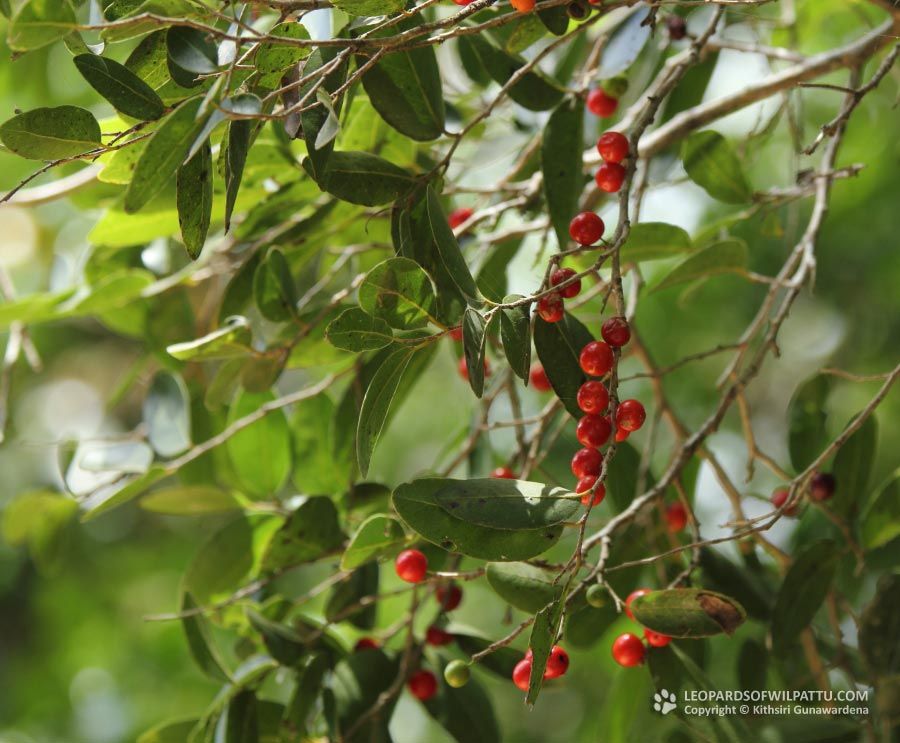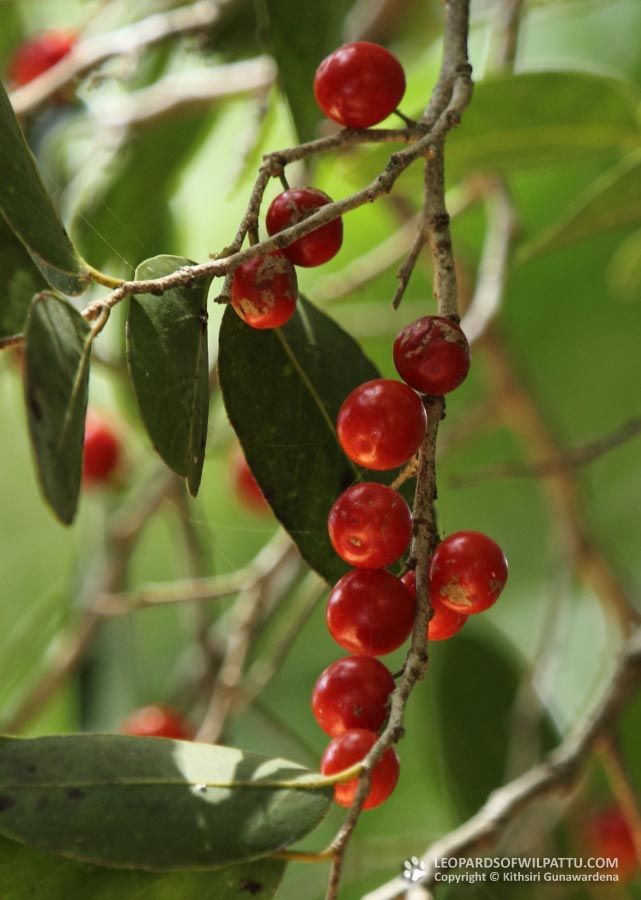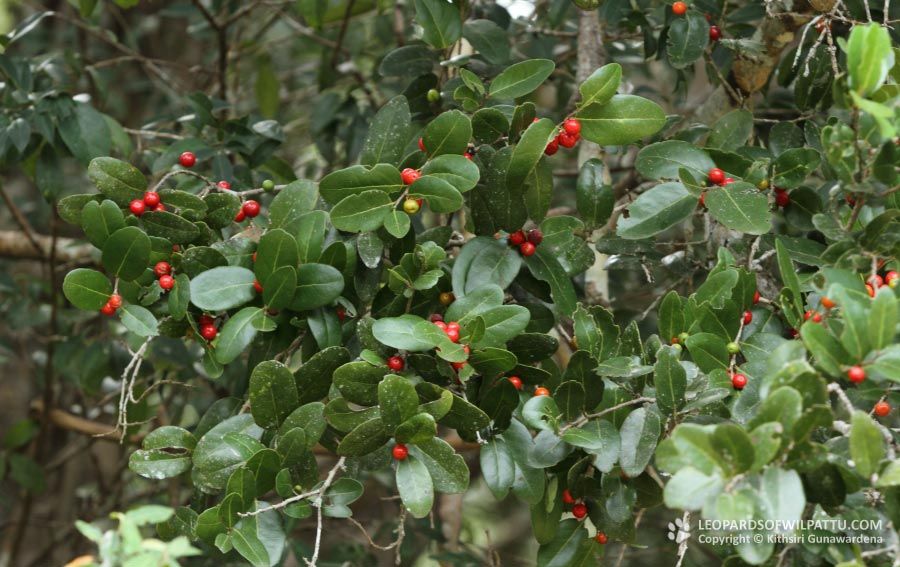
Trees & Shrubs ‹‹ Go Back
This is a common indigenous species found in the dry lowland forests of the country. It is also native to India.
The conservation status of this species is regarded as Least Concerned (National Red list 2012).
Weera trees grow in all the dry zone national parks and its sweet crimson red fruits provide a bounty to many species of animals. It is a slow growing tree, which will reach a maximum height of about 20 meters. The trunk, which is often gnarled and twisted, creates many crevices providing shelters for nocturnal animals such as Geckos, Snakes and Tarantulas.
This the host plant for the endemic Lesser Albatross butterfly which is seen in very large number during the butterfly season at Wilpattu.
Wilpattu probably is the national park where this species is most abundant. At localities such as Thambi Oluwa and Ibba Wala more than 70% of the trees are of this species. I have observed that most of these trees bear fruit during the moth June. Sloth Bears relish these fruits very much and if one is feeding on these fruits fallen under a tree they will usually spend a long period before moving away. I once watched a bear feeding on these fruits between Borupan Villu junction and Kumbuk Wila for more than an hour. Many species of birds and other mammals also feed on these fruits.
One of the most striking sights I remember at Wilpattu is of a pair of Black-capped bulbuls feeding on the bright red berries of this species at Borupan Wila one morning in June in 2012 after a slight shower. On a few occasions the birds could be seen surrounded by the bright red berries, their bright yellow breasts and black caps contrasting sharply against the red berries. Often they would hold a glistening red berry in their beaks for a few seconds before swallowing. I watched them feeding on the fruits through by binoculars for a short while. Even though the angle was not suitable for photography I remember this sight quite vividly.



